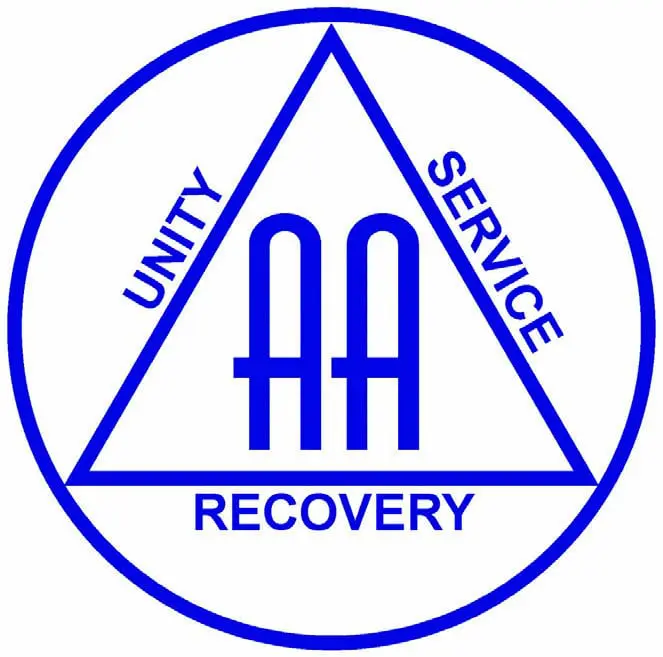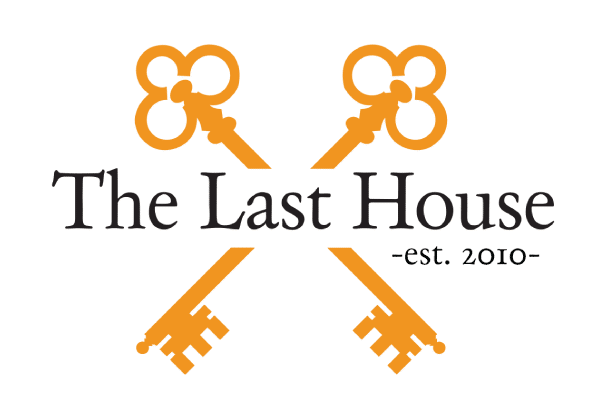Early recovery can feel overwhelming. After leaving a treatment program, many individuals worry about how to stay sober in the “real world.” This is where structured sober living becomes a lifeline. In a city like Los Angeles – home to a large recovery community – sober living homes offer a safe, supportive environment for people rebuilding their lives in sobriety. The 12 Steps of Alcoholics Anonymous (AA), a set of guiding principles for recovery, don’t just stay on paper here. They come alive in daily routines, relationships, and personal growth. At The Last House Sober Living in Los Angeles, our residents experience these steps in action every day as they build a strong foundation for long-term sobriety and improved mental health . The result is a community where hope thrives and sobriety isn’t just about not drinking or using – it’s about learning a new way to live.
From Rehab to Sober Living: The Bridge to Long-Term Recovery
Completing rehab is a huge accomplishment, but it’s just the beginning of the recovery journey. Without continued structure and support, it can be easy to fall back into old habits when faced with everyday stress. Studies show that individuals who transition into an aftercare program or sober living environment after rehab have higher success rates in maintaining sobriety . A structured sober living home serves as a crucial bridge between the controlled setting of inpatient treatment and the freedoms (and temptations) of normal life.
Why is structure so important? Structure and routine are key components of successful recovery . In addiction, life was often chaotic and unpredictable. By contrast, sober living provides a consistent daily schedule – wake-up times, chores, house meetings, curfews, and required activities – which creates a stabilizing rhythm. This new routine replaces chaos with stability and replaces fear of the unknown with a sense of security . Residents know what to expect each day. Over time, these healthy habits (like morning meditation or weekly goal setting) start to become second nature, empowering individuals in their sobriety journey . In short, structure helps turn early recovery into “the new normal,” making it easier to avoid falling back into a dysfunctional lifestyle .
Structured sober living homes also keep residents busy in positive ways. Idle time can be dangerous in early recovery – boredom or aimlessness may trigger thoughts of using again. Having a full schedule prevents that. Whether it’s attending a house meeting, going to work or school, doing a group workout, or having dinner with housemates, residents stay engaged. This helps them avoid boredom, which is a common relapse trigger . By staying productive and focusing on recovery-oriented tasks, individuals reduce the chances of their mind wandering back to old destructive patterns.
The 12 Steps: A Roadmap for Recovery and Hope
The 12 Steps, originally developed by Alcoholics Anonymous in the 1930s, have become the bedrock of many recovery programs . These steps are a set of guiding principles that help people achieve and maintain sobriety. In essence, the 12 Steps encourage individuals to: admit they have a problem they cannot control (Step 1), seek help from a power greater than themselves (Steps 2 and 3), take a honest look at their lives (Steps 4 and 5), make amends for past wrongs (Steps 8 and 9), continue self-reflection (Step 10), seek to improve spiritually (Step 11), and help others on their recovery journey (Step 12) . It’s a path not only to stop drinking or using drugs, but to fundamentally change one’s outlook on life.
One of the beautiful things about the 12 Steps is that they are active – they require action and participation. As the saying goes in AA, “It works if you work it.” Simply going to meetings and warming a chair isn’t enough to transform someone. Recovery is a program of action. “Basically, just attending meetings will not keep anyone clean and sober… There has to be action. That’s where finding a sponsor, working the steps and helping others come in,” one recovery expert explains . In other words, the Steps only truly come alive when a person practices them in real life – by talking openly with a sponsor, doing the written step work, and carrying the message to others still struggling.
So how do newcomers actually “work” the steps? Often, it’s with the guidance of a sponsor – a mentor in the fellowship of AA or Narcotics Anonymous. A sponsor is usually someone further along in recovery who has completed the 12 Steps themselves and can guide a newcomer through each step, one-by-one. Sponsors provide accountability, answer questions, and share their personal experience of how they got sober. This sponsorship relationship is a cornerstone of 12-Step programs, and it’s strongly encouraged in sober living. Many structured sober living homes in Los Angeles will require or at least expect residents to attend 12-Step meetings (like AA meetings), find a sponsor, and actively work the steps while living there . By doing this, the principles of the 12 Steps aren’t just abstract ideas – they become part of everyday life in the house.
Bringing the 12 Steps to Life in Sober Living
One of the greatest advantages of a structured sober living home is that it provides a real-life training ground for practicing the 12 Steps. The concepts from AA meetings suddenly take on real meaning as residents incorporate them into their daily routine. Here are some examples of how the 12 Steps come alive at The Last House and similar sober living environments:
Honesty and Acceptance (Steps 1 and honesty): The very first step in AA asks people to admit their powerlessness over alcohol or drugs. In a sober living house, this principle of honesty is reinforced constantly. Residents are encouraged to be open about their struggles and feelings rather than hide them. If someone is having cravings or feeling upset, they talk about it in a house meeting or with a sponsor instead of pretending everything is fine. Housemates and staff foster a culture where it’s okay to admit you need help – in fact, it’s expected. This openness is the foundation of recovery. By being honest each day, residents internalize Step 1 and surrender the false idea that they can do it all alone.
Daily Inventory and Accountability (Steps 4, 5, 10): Several of the 12 Steps focus on self-reflection and taking personal inventory of one’s behavior. In sober living, residents get daily practice with this. For example, if two housemates have a disagreement or someone breaks a house rule, they will be urged to take a look at their part in the situation (just like Step 4’s moral inventory) and promptly admit any wrongdoing (as Step 10 suggests) . It’s not always easy, but living in a community makes it harder to escape facing your actions. If you offend a peer or slack on your chores, you’ll hear about it – and then you have a chance to make it right. Making amends isn’t just a theoretical Step 9 thing; it might mean apologizing to a roommate for a rude comment or cleaning up the kitchen after leaving a mess. Residents learn to take responsibility for their actions and correct mistakes promptly. Over time, this builds integrity and self-awareness.
Building Faith and Routine (Steps 2, 3, 11): Sober living homes often encourage residents to develop some daily spiritual or mindfulness practice, in whatever form works for them. Mornings might start with a guided meditation or a prayer, helping individuals connect with a sense of a Higher Power or simply set positive intentions for the day. By seeking guidance outside of oneself, as Steps 2 and 3 describe (coming to believe in a greater power and turning one’s will over to it), residents find relief from stress and overthinking. Even those who are not religious discover the value of mindfulness, gratitude, or time for reflection. In the evening, some houses have a wrap-up where everyone might share something they’re grateful for or do a quick inventory of their day (linking back to Step 11’s focus on spiritual maintenance). These routines bring calm and focus, improving mental health and emotional stability. Instead of reacting to life’s ups and downs with fear or anger, residents practice acceptance and patience – living the Steps rather than just reading them.
Service and Fellowship (Step 12): The essence of Step 12 is helping others and practicing these principles in all our affairs. Sober living is a built-in way to do this daily. Residents support each other in countless ways – whether it’s a senior resident showing a newer member how to navigate public transportation to get to work, or simply cooking a group meal on a tough day. In fact, acting as a mentor to newer residents often keeps the more established residents on their toes. It’s often said in recovery that “you can’t keep what you have unless you give it away” . By sharing their experiences and hope with others, residents reinforce their own commitment to sobriety. Many sober living homes also involve residents in outside service, like volunteering at meetings (making coffee, setting up chairs) or participating in community service projects. This instills a sense of purpose and generosity. The camaraderie that develops among people who are overcoming addiction together is special – it’s common to hear housemates refer to each other as “family.” Indeed, The Last House prides itself on creating a brotherhood-like atmosphere where lifelong friendships are formed . This fellowship is the living embodiment of the AA promise that “we are not alone.” Feeling connected to others and useful to others is a powerful antidote to the isolation and self-centeredness that often accompanies addiction.
Community: The Heart of Sober Living
One of the most healing aspects of a structured sober living environment is the sense of community that it fosters. Addiction can be incredibly isolating – people often lose relationships and retreat into themselves as their substance use worsens. Sober living reverses that process by surrounding individuals with peers who understand what they’ve been through. Living together under the same roof, residents share not just chores and meetings, but laughter, meals, and milestones. Over time, housemates become like brothers or sisters, supporting each other through the highs and lows of early recovery.
This peer support is more than just a nice bonus – it’s been shown to significantly improve recovery outcomes. Research indicates that having strong social support and involvement in 12-Step groups is associated with reduced substance use and greater readiness to change in recovery . Positive relationships offer emotional support, understanding, encouragement, and accountability . In The Last House, every resident is both a contributor to the community and a beneficiary of it. For example, if someone is struggling with cravings or feeling depressed, there is always someone around to talk to – whether it’s a roommate, a house manager, or an alumni mentor. No one has to face challenges alone, which is a tremendous relief for families knowing their loved one is cared for 24/7.
Beyond the serious work, sober living communities have fun together. Learning to enjoy life sober is a vital part of recovery (after all, sobriety is meant to be fulfilling, not a punishment). At The Last House, residents participate in group activities like hiking in the Santa Monica Mountains, playing on a sober softball league, going to the beach, or having weekend BBQs. Such activities build genuine friendships and show individuals that they can have joy and excitement without alcohol or drugs. This camaraderie creates an atmosphere of hope and positivity. Residents often motivate each other with friendly competition (who can get the most job interviews this week, or who will cook the best group dinner) and celebrate each other’s successes, big or small. When one person hits a sobriety milestone (like 90 days or 6 months clean), the whole house shares in the pride of that achievement.

